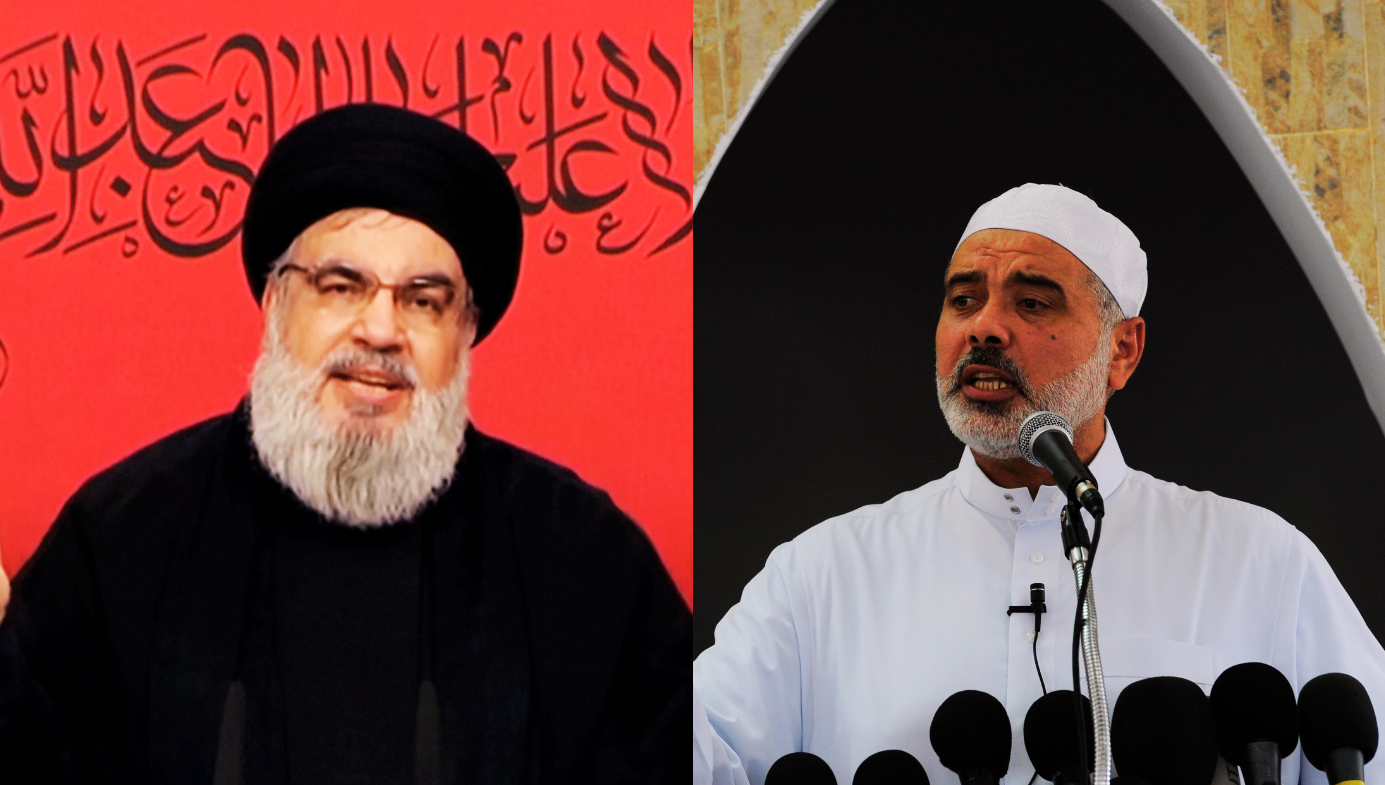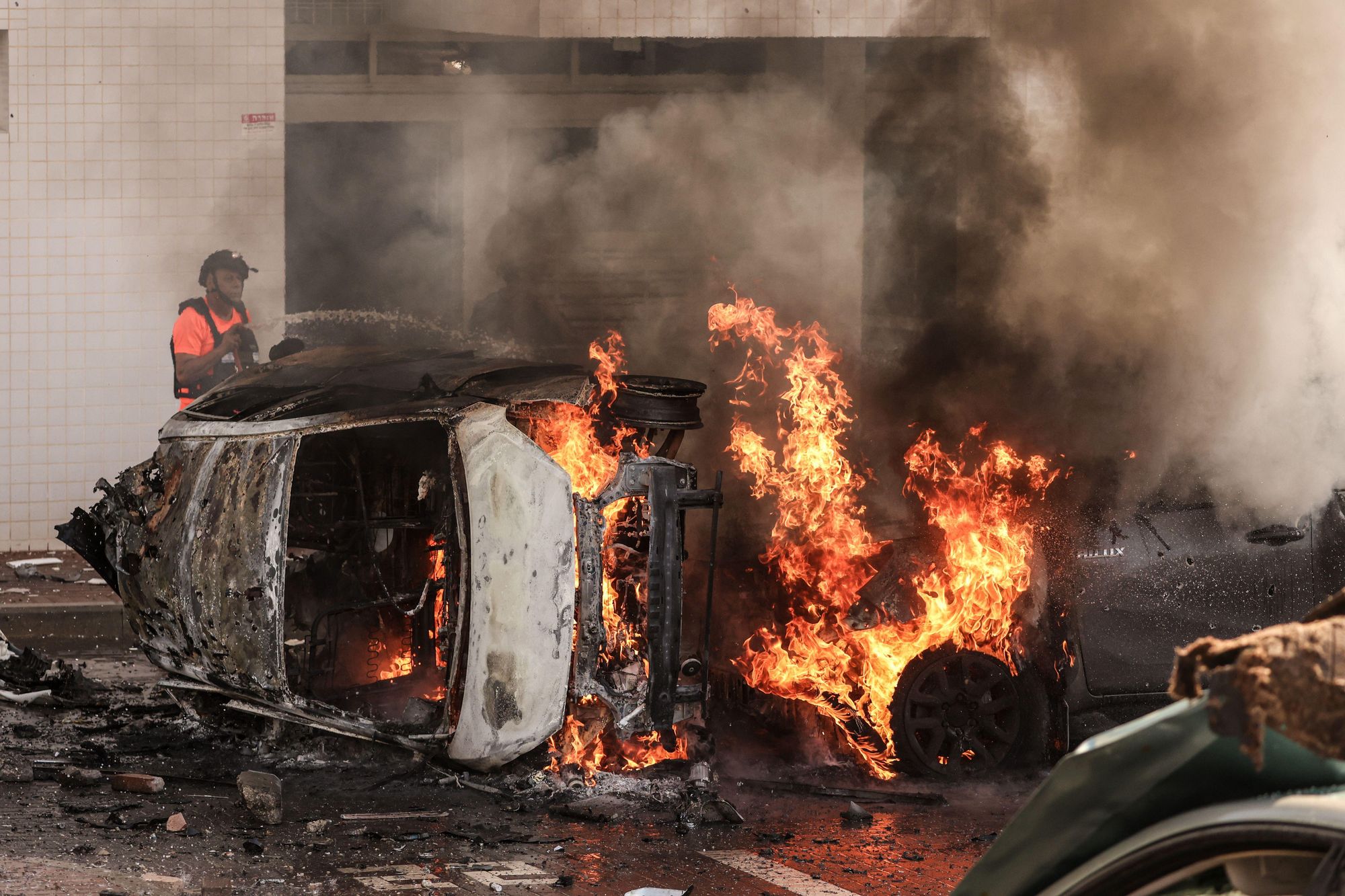Israel
What Comes Next For Israel?
Today's political and military leaders never imagined that the Hamas was capable of launching a successful invasion of Israel's borderlands.

The successful, savage assault on October 7th by the Palestinian Hamas organization, which controls the Gaza Strip, against the surrounding Israeli settlements and military outposts will most certainly bring down Binyamin Netanyahu’s far-right Israeli government within months and may well result in a radical reshuffle of the geopolitics of the Middle East. The slaughter of about one thousand civilians—the largest mass murder of Jews in one day since the Holocaust—and the atrocities that accompanied it (rape, torture, and the abduction of whole families, including babies and octogenarians, to Gaza) are something that no society or state can allow without a massive internal and external response.
Though Prime Minister Netanyahu himself has so far refused to admit responsibility or take blame for what happened, much of his until-now faithful right-wing base—not to mention the half of the country’s Jewish population which for years has opposed his anti-liberal and anti-secular incitement and political trickery—has been shocked to the core and will be happy to see him off the political stage. Netanyahu, of course, will strive to extend his months in office—and their number will depend on the length of the unfolding war. But go, eventually, he will, alongside the defense and security chiefs, including the IDF chief of general staff, the director of military intelligence, the head of IDF Southern Command, the head of the internal security service, the Shin Bet, and a host of lesser officials and officers, because of the colossal intelligence failure and the army’s incompetent, painfully slow response to the Hamas assault. Most of the assailants, who overran about a dozen kibbutzim and half a dozen IDF bases and massacred large numbers of party-goers in between, had between four to eight hours (depending on which site) to do their worst before they encountered IDF forces, who eventually helicoptered in.
No doubt one or more commissions of investigation, perhaps beginning their work even before the hostilities end, will look into how these multiple failures came about. But already it is clear that at base the fault lay with Netanyahu and his cabinet’s distraction and hubris: Elected to office in November 2020, they spent the past eleven months trying to radically reshape the way Israel was governed by severely limiting the judiciary’s ability to oversee and curb the government’s actions and lambasting “the leftists” and “the liberals” (Israel’s largely secular, largely Ashkenazi middle class) as defeatist subverters of “Jewish values.”
The defense establishment—IDF, Shin Bet, Mossad—during those months repeatedly warned the government that the social divisiveness Netanyahu was sowing was detrimental to Israeli security (even veteran Israel Air Force pilots, bent on preserving the country’s democratic norms, were refusing to volunteer or serve) and that the surrounding Islamist coalition, led by Iran, was preparing to strike. But Netanyahu refused to listen. Indeed, he persisted in a policy that effectively bolstered the Hamas in Gaza by allowing Qatar to send them suitcases full of dollars, while continuously degrading and denigrating the Palestinian Authority under President Mahmoud Abbas in the West Bank, partly in order to bolster Israel’s creeping annexation of that territory. (During the weeks preceding the Hamas attack the IDF transferred most of its troops guarding the Israel–Gaza border to the West Bank and transferred arms dispersed among the local defense squads in the settlements around Gaza to Israeli settlers in the West Bank.)

This distraction—from Gaza to the internal re-organization of government and to the affairs in the West Bank—was compounded by hubris (akin to the hubris that resulted in the intelligence failure of 1973, when Israel’s political and military chiefs refused to believe that Egypt and Syria were capable of confronting the IDF on the battlefield, and the army was caught with its pants down, almost leading to catastrophe). Today’s political and military leaders never even began to imagine that the Hamas was capable of organizing a massive deception and launching a successful invasion of Israel’s borderlands. Sure, they could occasionally target border settlements and even cities farther afield with primitive rockets or send a squad with Kalashnikovs to ambush a border patrol. But that was it, so they thought.
But what happened was entirely different—though let it be quickly said that some 1,000–1,500 of the invading Hamas force died in the operation on October 7th, not an insignificant loss for an “army” said to number only 20,000 fighters—and it has profoundly shaken the Middle East. Netanyahu and the IDF chiefs have announced that Israel will invade the Gaza Strip and, however long it takes and whatever the cost, will destroy the Hamas. Military observers believe that, if the prospective Israeli counter-invasion takes place, it will result in many thousands of dead Palestinians, fighters and civilians, and cost hundreds more Israeli lives (so far, the Hamas campaign has cost the IDF and Israel police some 300 dead, most of whom died on October 7th).
So far, Israel has responded with daily air attacks against Hamas concentrations, bases, bunkers, ammunition workshops, and commanders’ homes, Gaza’s health administration is claiming that some 3,000 Palestinian civilians have died. (Of course, there is no knowing if this is a true figure, as the Hamas, which controls the flow of information out of Gaza, is a thoroughly mendacious organization.)
But the Hamas assault and the Israeli response thus far has had a ripple effect, igniting daily mass Palestinian demonstrations and Israeli–Palestinian firefights around the West Bank. Israel has deployed a large number of reserve IDF and Border Police units in the territory and the Israeli authorities doubt that the territory’s three million Arabs want or are about to rebel in support of their embattled kinsmen in the Gaza Strip.
But for most Israelis far more worrisome are Iran’s other proxies in the region, principally the Hezbollah (the Party of Allah) in Lebanon. Since October 7th, Hezbollah fighters, and Palestinian fighters from Lebanon’s Palestinian refugee camps with Hezbollah authorization, have been harassing Israel’s northern border settlements with mortar fire, rockets, anti-tank missiles, and small-scale border incursions on a daily basis. Their aim has been to show support for Hamas and divert Israeli arms and attention away from Gaza and to threaten Israel with the prospect of a two-front war, the bane of Israeli military planners.
In normal circumstances, Israel would have responded to this low-key harassment with massive retaliation. But so far it has limited itself to small-scale cross-border artillery and air strikes against Hezbollah and Palestinian militia positions and units. The IDF appears bent on managing the campaign in Gaza unhampered by a second front in Lebanon. Hezbollah has a far more formidable military arm than the Hamas. Armed, trained, and financed by the Iranian Revolutionary Guard since its emergence in the mid-1980s, the Hezbollah is reported to have 150,000 rockets, some of them highly accurate, and a commando force (the Radwan battalions) with thousands of fighters, many of whom were battle-hardened while participating in the Syrian civil war on the side of President Assad’s army.
Whether Hezbollah joins the fight, all in, raining down thousands of rockets a day on Israel’s cities, army, and air force bases, and infrastructure, is unclear. But it appears that Iran, for the moment at least, is reluctant to see a full-scale clash between Israel and the Hezbollah, hoping to retain the Hezbollah’s fighters and rockets as a permanent deterrent against an Israeli—or Israeli-American—offensive against its nuclear weapons program. In such a full-scale clash, Hezbollah would lose much of its formations and weaponry, and its value as a deterrent would be vastly reduced—and Israel would be free or freer, to strike at the nuclear installations. But in the coming weeks all of this may be counterbalanced by the pressure on Iran and the Hezbollah, from the “Street” and from within their own military’s ranks, to join the battle and save their Hamas brothers from defeat.
At the same time, the Iranians are aware of the possibility that Israel may at some point in the coming months use the opportunity or cover of the war against Hamas to destroy their nuclear installations. Iran has long vowed that it will destroy the Zionist entity and Israel has long vowed that it will never allow Iran to acquire the nuclear capability to eradicate Israel. Over the past decades the possibility that Israel may launch its air and sea forces—which include cruise-missile-armed submarines—and commandos to take out the Iranian installations has repeatedly been mooted. The Iranians may feel that for Tel Aviv, this is the time.
A major obstacle to such a denouement—apart from Israel’s possibly insufficient weaponry to carry out the task—has been the consistent opposition of all American administrations since Obama’s to such an Israeli strike, which threatens to suck in America. After its two recent disastrous interventions in Iraq and Afghanistan, Washington is profoundly shy of having a go at Iran, by far preferring the path of diplomacy to put an end to Iran’s nuclear ambitions.
But the horrific Hamas assault, the Hezbollah provocations along the northern border, and the missile and drone launches against Israel from far-away Yemen by the Iranian-backed Houthi faction (shot down by American naval units) may well persuade decision-makers in Tel Aviv—where the IDF is headquartered—to use the opportunity and the current largely sympathetic international climate to do away with the Iranian nuclear project once and for all. It is unclear whether Israel, engaged up to its neck against Hamas and possibly the Hezbollah, and lacking large bunker-busting bombs, advanced air-refueling capabilities, and Saudi permission to fly through its airspace, is up to the task.

On his visit to Israel this week, principally to demonstrate his backing for the impending campaign to crush the Hamas, President Biden appeared intent on making sure that the war did not spill beyond Israel’s border with Gaza. The dispatch of the American carrier task force to Israeli and Lebanese waters was designed to deter Iranian and possibly Hezbollah involvement in the war. But it may also have been a “friendly” signal to Israel to refrain from launching a pre-emptive strike against the Hezbollah, or even against the Iranian nuclear installations.
In any event, Biden’s intervention probably had another motive—to reassure America’s Arab “allies” in the Middle East that Washington was re-engaging in the area and to counter Iranian efforts to subvert or disempower the pro-Western Sunni regimes (Saudi Arabia, the UAE, Jordan, Egypt). The timing of the Hamas assault was apparently partly dictated by a desire to halt what appeared to be progress in the trilateral US–Saudi–Israeli negotiations aimed at producing both an American–Saudi defense pact and a Saudi–Israeli normalization of relations. By provoking an Israeli counterstrike, with many anticipated Palestinian civilian casualties, the Hamas understood that rage against Israel and the West in general would overtake the Arab “Street” across the Middle East (as indeed erupted when the Israel Air Force was falsely charged with bombing a Gaza hospital compound). Such rage would necessarily halt any progress toward an Israeli–Arab rapprochement. (The timing of the Hamas assault, October 7th, 2023, likely also aimed at reminding the Muslim world of an earlier Arab “victory,” the initially successful Egyptian–Syrian assault on Israel on October 6th, 1973, almost exactly 50 years to the day.)
One last thought: The Hamas assault and its known and still unknown ramifications may affect the general world order (or, more accurately, disorder). Russia, growingly dependent on Iranian armaments in its battle with Ukraine, is now consolidating its partnership with the mullahs in Teheran while China, increasingly challenged by the United States and its Pacific Rim allies, is hesitantly inching into the arms of its historic Russian rivals. So, paradoxically, despite Russia’s and China’s problems with radical Islam (Chechnya and the Uyghurs), it would appear that both, at least in the short term, will make common cause with Islamic fundamentalism to challenge the West and its Jewish offshoot at the heart of the Middle East. This bodes ill for Israel.






